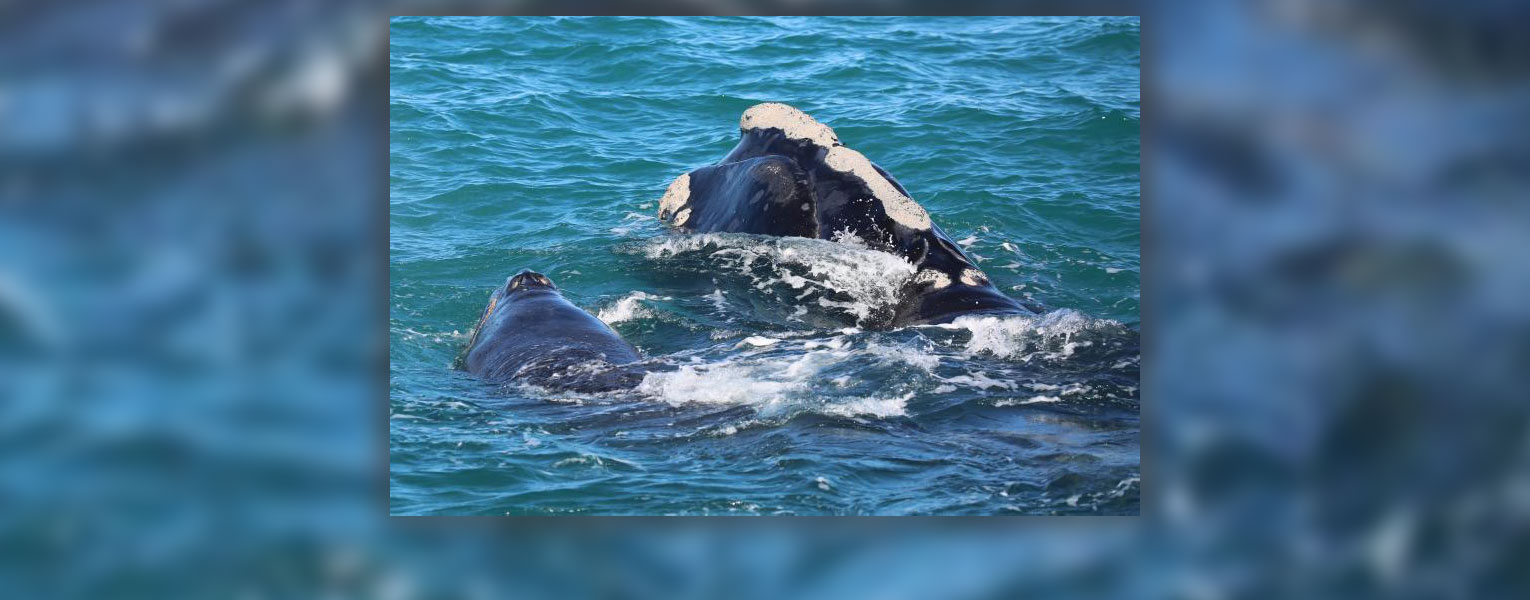1/18/2023
Pilgrim Makes an Appearance
Critically Endangered Whale Visits South Florida
By Bethany Augliere
A critically endangered North Atlantic right whale and her new calf were recently spotted close to the South Florida shore for a few days, including just off the coast of John D. MacArthur State Park, Jupiter Beach Park and the Juno Beach Pier, according to Steve Burton, director of stranding and population assessment at the FAU Harbor Branch Oceanographic Institute.
The National Oceanic and Atmospheric Administration (NOAA) and Florida Fish and Wildlife Conservation Commission (FWC) asked Burton and his team to take photos from shore to confirm the whale’s identity.
Right whales are dying faster than they can reproduce, according to Steve Burton, director of the stranding and population assessment team at the FAU Harbor Branch Oceanographic Institute. “Fewer than 350 right whales exist, so the public should feel very lucky to witness these animals,” he said. “It’s an incredibly rare sighting.”
Considered one of the most endangered animals on the planet, right whales have been listed on the Endangered Species Act since 1970. Historically, they were threatened due to whaling. They got their name because it was the right whale to hunt — it moved slowly and would float after being killed. Now, “vessel strikes and entanglement with fishing gear are their demise,” Burton said.
During the winter months, females migrate to give birth in warmer waters off the coast of Georgia and Florida. As the only known calving grounds, these waters have been designated as right whale critical habitat by National Oceanic and Atmospheric Administration (NOAA). They travel north starting in the spring to their feeding grounds and mating grounds in waters off New England and further north into Canadian waters.
This female whale, nicknamed Pilgrim by the scientists who study her, is 10 years old and has her first calf, which is one of only 11 new calves this season. Scientists estimate that fewer than 100 breeding females exist, according to NOAA.
Pilgrim is a unique animal and was named after her initial sighting location. She was first seen as a very young calf with her mother, Wart, in Cape Cod Bay, near Plymouth, Mass. Researchers think she was born in the Northeast instead of the typical right whale calving grounds in the Southeast U.S., according to NOAA.
This season, beachgoers first spotted Pilgrim and her calf on Dec. 30, just offshore of Canaveral National Seashore, between New Smyrna Beach and Titusville, Fla. When the right whale was spotted close to shore in South Florida on Jan. 10, NOAA and Florida Fish and Wildlife Conservation Commission (FWC) asked Burton and his team at FAU Harbor Branch to take photos from shore to confirm the whale’s identity.
“What I saw was just a playful little calf and its mom,” Burton said. “It was bonding time.”
If you would like more information, please contact us at dorcommunications@fau.edu.
Whale Safety
Steve Burton and other officials said they were concerned for the safety of the critically endangered North Atlantic right whale and her new calf when the two were recently spotted so close to the Florida shore.
Burton said that if you see these whales, it’s important to give them space. To protect the whales, federal law requires vessels, paddle boarders, and aircraft, including drones, to stay at least 500 yards away from right whales.
To report a right whale sighting from North Carolina to Florida, or a dead, injured, or entangled whale, contact NOAA Fisheries at 877-WHALE-HELP (942-5343) or the Coast Guard on marine VHF channel 16.
